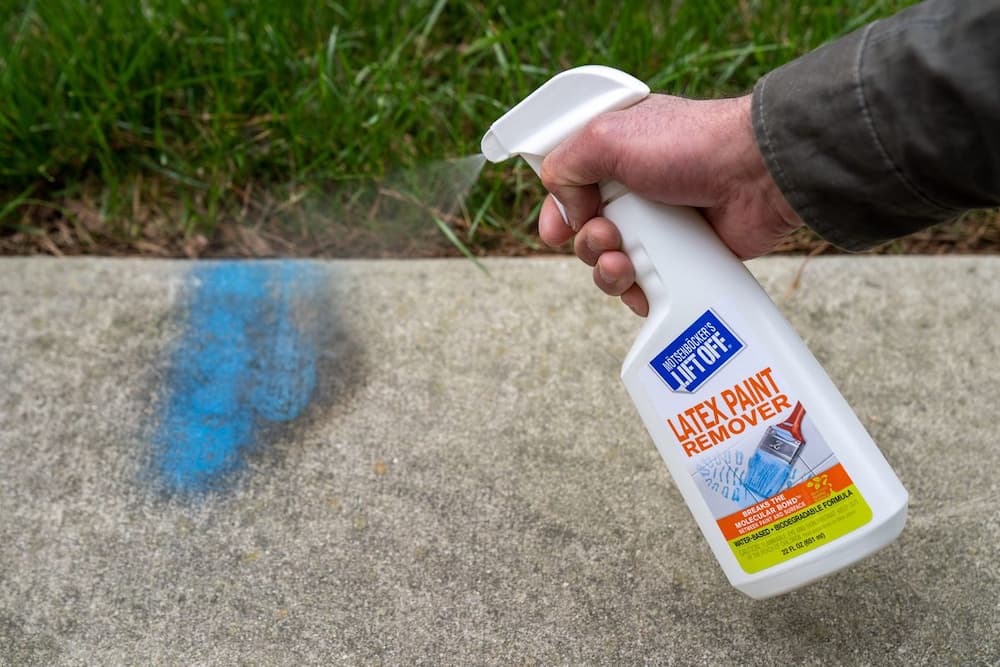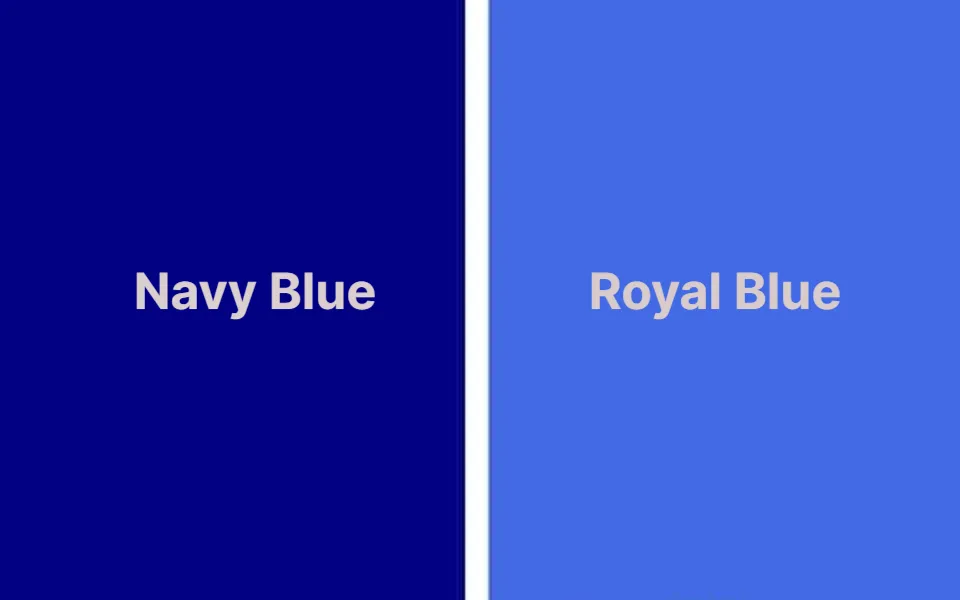Do you have some woodwork or furniture that needs to be painted but the old paint won’t come off? Fear not, assistance is nearby!
The best paint stripper for wood will be suggested in this article so you can quickly and easily get rid of the old paint.
The best paint strippers for wood include: Nitromors All Purpose Paint and Varnish Remover, RUSTINS STNF500 Strypit 500ml, Bahco 665 Carbide Edged Heavy Duty Paint Scraper, SEEKONE Hot Air Gun Kit, and VonHaus 2000W Heat Gun.
Additionally, we’ll provide you with some advice on how to use it safely and efficiently. For more information, keep reading!
Best Paint Stripper For Wood
Nitromors All Purpose Paint And Varnish Remover
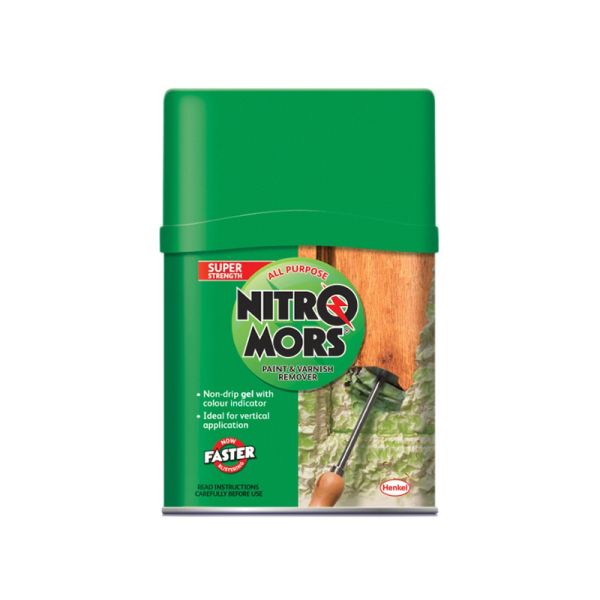
Key Feature
- Gel with Color Indicator that Does Not Dribble.
- ideal for vertical applications.
- Speedy blistering.
- Green paint is applied so you can see the areas you’ve already covered.
- 4 litre tub.
Essential Things To Keep In Mind
- A 2-litre tin of Nitromors should be enough to strip around 5 square meters (that’s approximately 3 wooden doors)
- You might have to use more than one application for the desired results
RUSTINS STNF500 Strypit 500ml
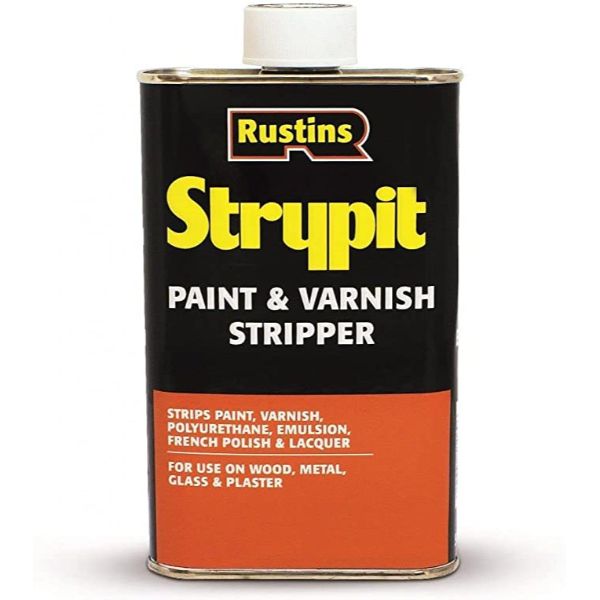
Key Feature
- Non caustic gel.
- strong against stone, glass, metal, and wood.
- Useable on a vertical surface and has a gel consistency.
- removes multiple paint coats.
- Non drip.
- Methylene chloride (DCM) is absent from this.
- To make the area where the liquid has been applied more visible, it is orange in color.
- washable with water and solvents.
Essential Things To Keep In Mind
- Both the liquid and the vapour form of rustins are very flammable and have a potent aroma.
- To achieve the best results, use two coats and apply a liberal amount of paint, allowing it to fully penetrate the surface.
Bahco 665 Carbide Edged Heavy Duty Paint Scraper
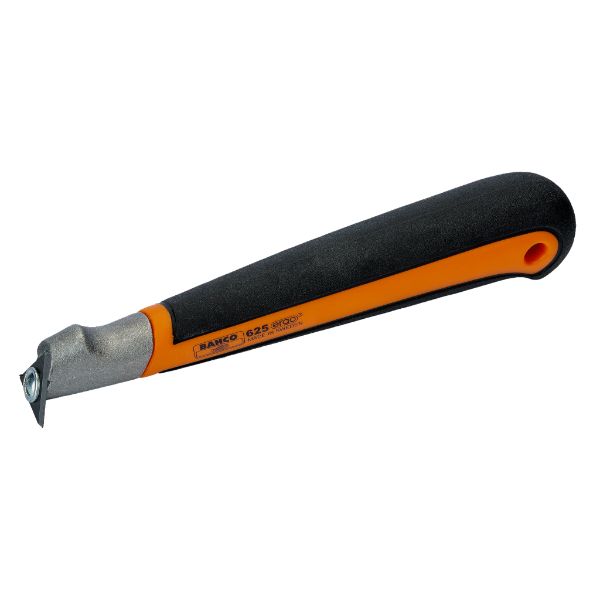
Key Feature
- Scrape paint off of wood, metal, and concrete using this.
- 50 times more durable than a steel blade is a cemented carbide blade.
- Utilizable with 50 and 65mm blades.
- Lightweight:104 g.
- Wide angle between the blade and handle for extra knuckle room; easy-grip handle.
- Slim design; suitable for use in confined areas.
Essential Things To Keep In Mind
- Light to medium-sized jobs are best suited for the Bahco scraper.
- Invest in a diamond stone to keep the blade sharp; this will also increase the blade’s lifespan.
SEEKONE Hot Air Gun Kit
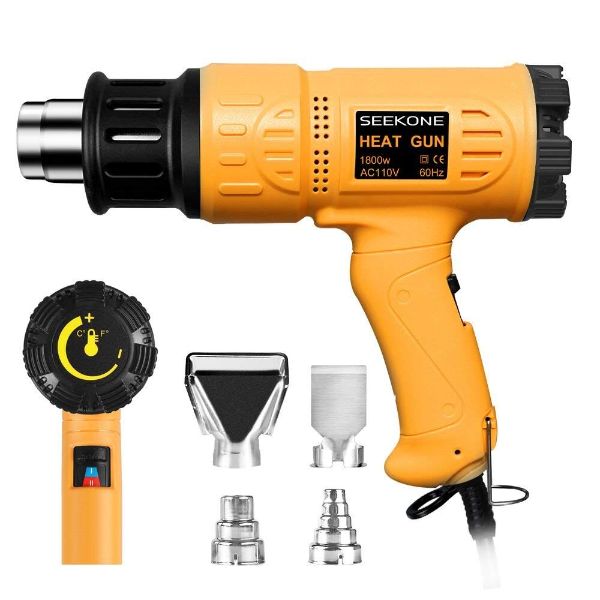
Key Feature
- 2000w.
- 2 modes I: 50°C-450°C, 190–210L/min; II: 50°C–600°C, 250–500L/min
- heats to 600°C in a matter of seconds.
- Rheostat-style heating is provided by the black dial.
- Controlling air flow is done using the handle’s high/low switch.
- Heat gun/circuit damage is avoided by overload protector.
- Ergonomic handle prevents repetitive strain injuries and other disorders
- Greater stability is offered by integrated support.
- 1.6m cable.
- 24 hours support team on hand to answer your queries.
- 5 different nozzles allow you to alter air flow and heat.
- 2 accessories included: scraper and putty knife.
Essential Things To Keep In Mind
- To avoid overheating, users who are concerned about safety advise using this gun for no more than 20 minutes at a time.
- The cable is on the shorter side. An extension lead can be used, but use caution.
- We think that this is the best paint remover for wood.
VonHaus 2000W Heat Gun
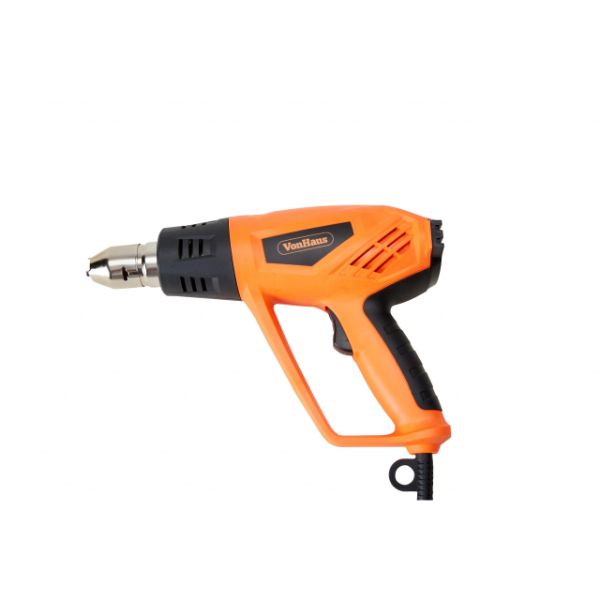
Key Feature
- 2000w.
- There are two operating temperatures: 350°C at minimum airflow of 250 l/min and 550°C at maximum airflow of 550 l/min.
- incorporates a thermostat to stop overheating and increase tool life.
- includes a selection of 4 different nozzles.
- Designed for ease of use, ergonomically speaking, with ideal weight distribution.
- Gun can safely cool down on a vertical resting base.
- Cable Length: 1.8m.
- automatic shutoff feature
- made with PP composite that has been strengthened for strength.
- 2 year warranty.
Essential Things To Keep In Mind
- Make sure you always point the heat gun in the right direction and direct the heat where you need it because the buttons are quite touch-sensitive.
How Does Removing Paint From Wood With Paint Stripper Work?
Correct application of paint stripper allows for the simultaneous removal of several coats of paint.
Additionally, it is quicker and simpler than sanding.
Old paint that has been dry for many years responds best to this method.
Of course, there are a zillion different ways to remove paint. However, for wood, a paint stripper is unquestionably your best and first course of action.
By penetrating the layers of dried paint, paint stripper gets to work. The old paint and the original wood surface become separated as it seeps deeper.
Your old paint may occasionally bubble up. Occasionally, it will simply fall off. After your material has dried in some instances, you’ll need to use a scraper and a little elbow grease.
After reading this article, you’ll be prepared to use various paint strippers to remove old paint from wood.
See more about Best Paint Brushes For Trim
Prepare For Stripping Paint From Wood
The majority of the legwork was done for you because our top three choices are all exceedingly mild formulations with levels of toxicity that are significantly lower than those of the majority of paint strippers.
Wear chemical-resistant gloves regardless if the safety instructions for a specific product require them.
Supplies
You’ll need these basics to get started stripping paint off wood:
- Paint stripper material
- 2 1/2″ putty knife
- Plastic sheeting
Prep Your Work Area
Thankfully, there aren’t many steps involved in getting ready to use a paint stripper on wood.
The preparation is akin to painting without the use of rollers, brushes, and paint.
You should first set up some plastic or cloth drops beneath your work area.
Any dry or wet debris that might fall off during application will be caught by these. While it sets, additional material might come loose and fall off, and the dry bits that fall when you peel or scrape the material off all land on your plastic drop.
Once more, prepare that damp rag just as you would for a painting project. When your paint scraper gets clogged with debris, use this to clean it.
Always remember to wear protective gloves and eyewear that is resistant to chemicals.
Techniques For Using A Paint Stripper On Wood
Additionally, the method for applying paint stripper is fairly simple.
Just spread it on like peanut butter on a bagel, albeit a little thicker.
If your product specifies it, use plastic sheeting after the entire area has been covered.
Plastic Sheeting Top Layer
Even the best paint strippers have negative reviews on Amazon from customers who claim that the product was ineffective, difficult, or didn’t remove the paint at all.
You’ll notice if you carefully read the reviews that many of these customers did not place plastic on top of their paint stripper. They’re skipping an important step.
Plastic wrap should be placed over the still-wet paint remover. That will prevent it from completely drying out while allowing it to continue penetrating the layers of paint.
When stripping paint, it’s best to use the same material that is typically used as a plastic drop cloth.
A roll of 3.5mm plastic drop in particular might be helpful.
Peel back the plastic and use your scraper to scrape off the gooey material after the recommended amount of setting time, which is typically between 30 and 40 minutes.
When you finally see the pristine, aged wood that had been hidden by so many layers of dated, crusty shellac and paint, you breathe a huge sigh of relief.
These non-caustic paint strippers are much faster, more efficient, and healthier for you to use than sanding with sandpaper or other abrasive materials.
It’s time to actually pick a product and give it a try now that the task has been presented to you!
Clean Up After Using A Paint Stripper
There are a few key things to keep in mind when cleaning up after using a paint stripper:
- To protect your skin and eyes from the chemicals in the stripper, be sure to put on gloves and goggles.
- Always use a damp cloth to clean up, and keep your airway closed.
- Rinse with cold water right away if you get stripper on your skin or clothing.
- All rags and materials from the stripping procedure should be disposed of in a sealed container.
- Old paint can be quickly and effectively removed using paint strippers. Just be sure to carefully read the directions and exercise all necessary caution.
Suggested reading: One of the best ways to quickly improve the appearance and ambiance of a space where you probably spend a lot of time is by updating your kitchen cabinets. So, how much does it cost to paint kitchen cabinets?
Choose The Best Paint Stripper For You
What Exactly Is Paint Stripper And Why Do I Need To Use It?
Paint stripper is a chemical substance used to remove paint, varnish, glue, and other coatings from painted surfaces and treated furniture as well as general dirt and dust. Repainting frequently necessitates the removal of old paint and varnish build-up since new coats of paint or varnish may not adhere properly until the surface has been thoroughly cleaned. Paint stripper is a useful product to use on anything that would potentially be harmed by, or otherwise be unsuitable for, physical removal methods like scraping, sanding, or power-washing.
What Varieties Of Paint Remover Are There?
Solvent-based and caustic-based paint strippers fall into two major categories. Depending on the type of surface you’re applying it to, its condition, and the type of paint being removed, you’ll need to use a specific one.
Solvent-based: In order for this kind of paint stripper to work, the surface and paint’s adhesive bond must be weakened. On surfaces like wood, metal, and masonry, solvent-based strippers are effective at removing paint, epoxies, and varnishes. These strippers are usually more expensive and have strong chemical odors. The solvents benzyl alcohol and n-butyl acetate are frequently found in paint strippers. Water-based strippers are considered solvent-based since water serves as the solvent in this scenario; although they may contain a small amount of chemicals, they are significantly less than traditional solvent-based strippers.
Caustic-based: A highly alkaline active ingredient, like sodium hydroxide, is used in this kind of paint stripper to break down chemicals in the paint, working differently from solvent-based ones. On masonry surfaces like brick and concrete, caustic-based strippers perform best for dissolving oil-based paints. Aluminum, which can be eroded by caustic chemicals, and hardwood, which can be stained or blackened by caustic formulations, are two surfaces that should not be stripped with caustic strippers. However, non-caustic strippers are more common in the UK.
What Safety Measures Need To Be Taken When Using Paint Stripper?
When using paint strippers, the same safety precautions that apply to most chemical products must be followed. Always adhere to the warnings on the bottle or tin as well as the safety instructions on the datasheet that the manufacturer provides. While specific safety instructions for each product may vary slightly, in general you should avoid skin and eye contact by donning thick work gloves and safety goggles, stay away from fumes, and only use paint stripper in a well-ventilated area or with the appropriate breathing apparatus. Additionally, since some paint strippers are very flammable, you should keep your distance from open flames.
How Should I Use Paint Remover?
With a disposable paint brush and short strokes moving in one direction, paint stripper should be applied; for application on wood, move in the direction of the grain. Although the instructions on the actual stripper will give you the most precise instructions, generally speaking, solvent-based strippers will call for a thinner layer and a shorter wait time, while caustic-based products call for a thicker application and a longer wait time. Your surface may need to be cleaned with white spirit or, in the case of high-PH caustic strippers, a neutralizing agent before being repainted after applying and gently scraping or otherwise washing off the paint.
Although you might be confident that you’ve selected the best product for the job, it’s always a good idea to carry out a small patch test on the surface or object to make sure the chosen stripper won’t damage or discolor your surface.
Frequently Asked Questions
How Long Does Paint Stripper Last?
Little to no evidence exists that paint stripper loses its effectiveness over time. To ensure that your paint stripper remains as effective as possible for as long as possible, it is best to keep it sealed and airtight when not in use.
How Should Paint Remover Be Thrown Away?
In order to dispose of paint stripper, never pour it into the ground or down the sink. The most secure method is to dispose of it in a household hazardous waste collection program, but be aware that regulations may differ by state or country.
Can Paint Remover Damage My Clothes?
While paint stripper lifts and removes any paint or varnish it comes into contact with, there is no proof that it can taint or impair the appearance of your clothing. Nevertheless, it’s always better to be safe than sorry, so when using paint remover products, avoid wearing priceless items and put on the appropriate protective clothing.
Conclusion
Grab a sturdy contractor bag. All of your plastic drops with the paint layers you’ve peeled off will be discarded.
As you move towards the center, start folding in from the edges and sort of lifting the drop cloth. In doing so, a small hill should be created, allowing the old paint to slide down it and toward the center.
You’re almost done when you fold up the drops, put them in the contractor’s garbage bag, and clean your scraper.
If the mess was small, you could use your paint scraper to gather the old paint particles and sweep those into a dustpan rather than discarding your plastic drop cloth, assuming it’s still in usable condition.
I appreciate you reading.
